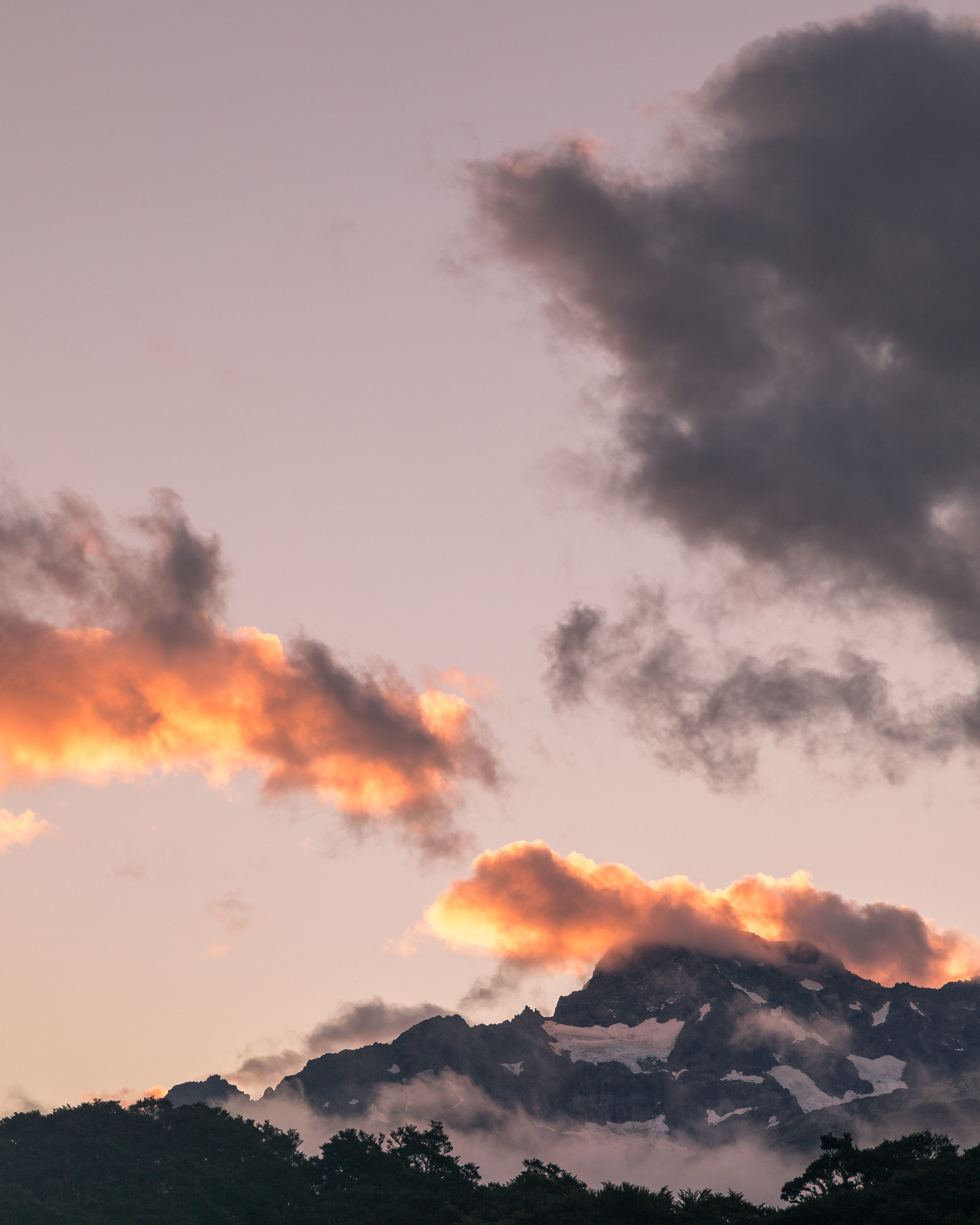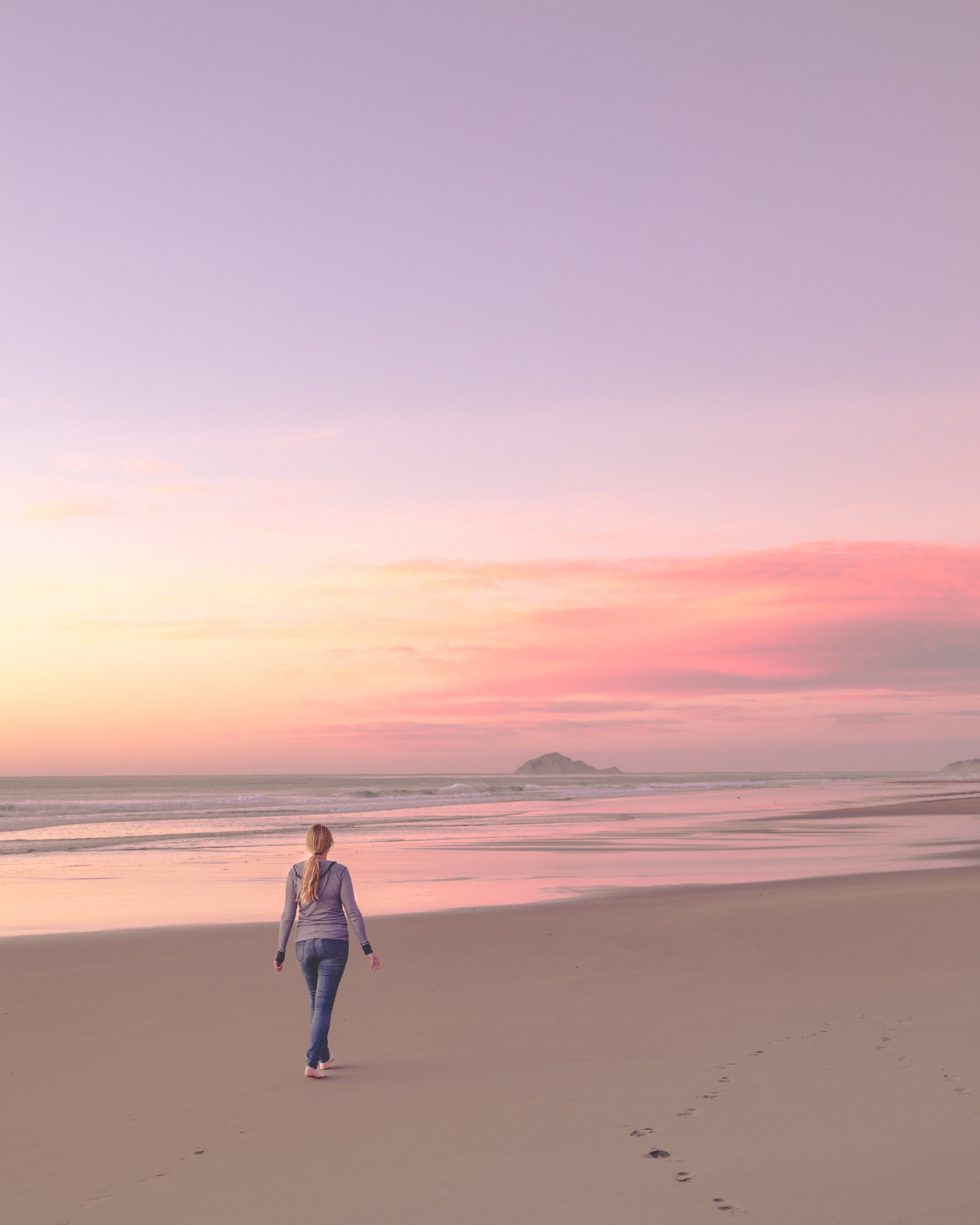"New Zealand was always a land of birds, having only three native mammals (all of which were bats).
When James Cook first arrived in New Zealand, he remarked that the sound of birdsong was deafening. It was so loud, that the men who worked in Wellington harbour had to sail out to sea in order to get some sleep.
Now, in many places, this birdsong has gone quiet and New Zealand's birds are in trouble".
Evan Smith - the Hut Warden of Lake Mackenzie Hut on the Routeburn Track - sure knows how to make an impact with his evening talks. Having arrived in New Zealand to do our first of the nine Great Walks, we were blown away by a brutally honest analogy of what has happened in New Zealand.
A very brief history
New Zealand separated from Gondwana millions of years ago and was the home to a huge diversity of birds. Archaeologists found that New Zealand was home to the largest flightless bird ever known - the Moa. It stood at over two metres high (making it the size of the tallest NBA players.) and could at full stretch, reach three metres.
More incredible, was that the Moa were hunted by another extinct species called the Haast Eagle. This bird of prey had a wing span of three metres and was able to hunt the mighty Moa.
Morepork or Ruru: an owl native to New Zealand
With birds like the Haast Eagle overhead and no mammal predators, staying on the ground was the best survival method for New Zealand's birds. This meant that many species like the Kakapo evolved to become flightless.
Birds were safe on the ground and their instincts led them to be inquisitive of anything at this level, knowing that the danger was from above. Many even made their nests on the ground, this made them even more vulnerable to what was to come.
Introduced predators
All changed when humans arrived in New Zealand, in particular when the Europeans turned up in the 18th Century. With people firstly came rats aboard ships. As few things hunted rats, they quickly exploded in numbers and found easy snacks in the low-lying nests. But this was just the start of the problem.
The Europeans decided that New Zealand also needed a fur trade, so imported possums. Anyone who has been to Australia know that possums reproduce at an alarming rate and devour huge amounts of vegetation. It's recently been found that possums have also acquired a taste for chicks, preying on the defenceless birds in nests.
Kea sitting on one of the traps for introduced predators
However, the worst of the bunch is the stoat. To us Brits, a stoat looks like a cute, furry animal, and is rarely seen. Ask a New Zealander about them and you get a completely different perspective, one of a veracious predator that has contributed to making some bird species extinct and put several others on the endangered list.
The introduction of stoats
You may be asking "why on earth would Europeans introduce stoats to New Zealand?" Well, the answer is that they thought this could eradicate another species they introduced - the rabbit. As you can see, the colonialists didn't really learn from their mistakes.
Like Australia, rabbits were brought in so people could go hunting. They didn't seem to care that rabbits reproduce at a rapid rate and soon farmers were finding that they had no grass for their livestock to feed on.
Red Crowned Parakeet
Scientists at the time warned about what this would bring, that stoats are opportunists and would go for an easy kill (like a bird) rather than an exhausting chase (like a rabbit). They weren't wrong.
Why are stoats so deadly?
The more you learn about stoats, the more you realise just how they have evolved to become a voracious predator. Firstly, they can travel long distances, and climb and swim up to distances of 1.5 kilometres. If they think the swim is too long, they've been known to climb on driftwood to reach their chosen destination. They can live above the tree line in alpine conditions and just about anywhere in New Zealand.
Stoats not only eat a lot, but they also kill for fun. Not satisfied with having a full stomach, they've been seen to kill the rest of the chicks in the nest and leave them uneaten. They're also breeding machines with females being able to give birth to thirteen kittens if there is enough food.
Fantail
Even more staggeringly, female stoat kittens can be impregnated before leaving the nest, meaning the population of stoats can grow incredibly fast. I
As nothing hunted the stoats, this meant that they soon became an apex predator wiping out swathes of birds in their wake. It wasn't long before only a few off-shore islands were the only places in New Zealand that were predator-free.
The battle for New Zealand's birds
New Zealand is fighting back against what looks like a monumental challenge and this has been significantly through the input of national carrier Air New Zealand.
Evan Smith (remember, the warden on the Routeburn), told us how Air New Zealand first got involved in the fight to conserve New Zealand's birdlife assisting with a very micro trapping program he had started around Lake Mackenzie Hut. This trapping program had an immediate impact, and sightings of highly endangered birds like Whio, Mahua, Rock Wrens and Kea slowly began.
A Kea on the Routeburn Track
Evan had bought six traps and demonstrated how many stoats he could catch just with this small investment. Soon Air New Zealand jumped in and covered the whole track and surrounding areas with traps. The once silent valley is now beginning to come alive with birdsong again.
Air New Zealand's impact
Air New Zealand's incredible partnership with controlling predators on the Routeburn Track, doesn't stop there. As well as making a difference on The Routeburn, they've worked closely with the Department of Conservation to protect the Milford Track and have recently expanded this to more of the Great Walks, including Lake Waikaremoana, Abel Tasman and the Whanganui Journey.
They've also worked really closely with DOC to fly over 2,500 threatened native birds such as Kiwi, Takahe and Kakapo to safe places and ensure the survival of some of New Zealand's most threatened iconic birds. This has also lead to successful breeding programs which are slowly growing the population of several birds which were on the brink of extinction.
It's seen Kiwis and South Island Robins released on The Rakiura Track on Stewart Island, Pateke on the Milford Track and Whio (blue ducks) on the Routeburn. The impact has not just helped the birds, but also native plants and vegetation has bounced back in these areas.
There's nothing more pleasing than to see that the conservation project is at work in places where people can actually see it in effect, making the Great Walks come alive with birdsong once more.
We hope to return to New Zealand one day and face the positive dilemma of not being able to sleep due to the deafening birdsong!
This post may contain affiliate links, meaning at no additional cost to you, that we will earn a small commission if you click through and decide to make a purchase. This helps towards the costs of running our website. :-)
Like it? Pin it!
Have you hiked any of the Great Walks of New Zealand? Did you spot many native bird speices? Let us know in the comments below!






























